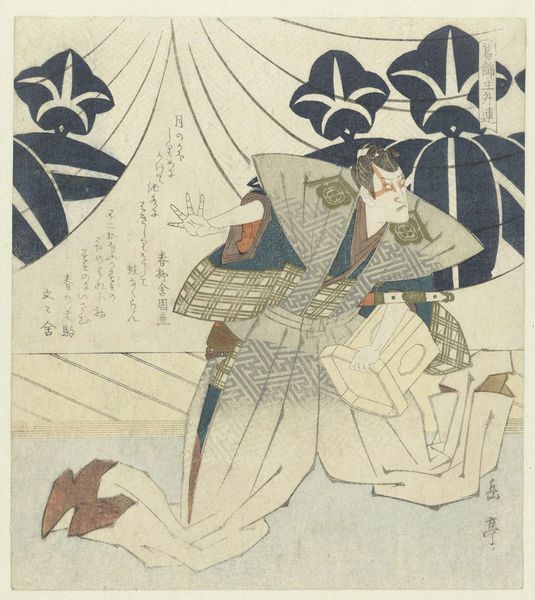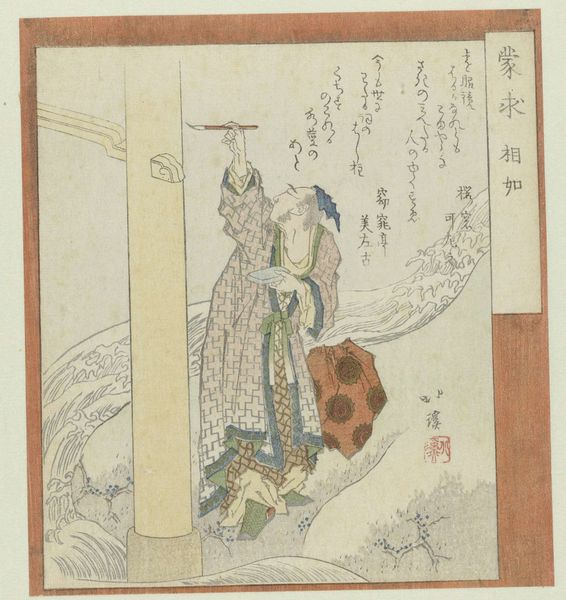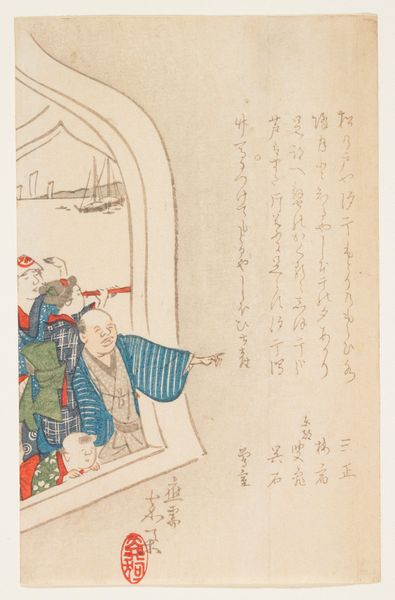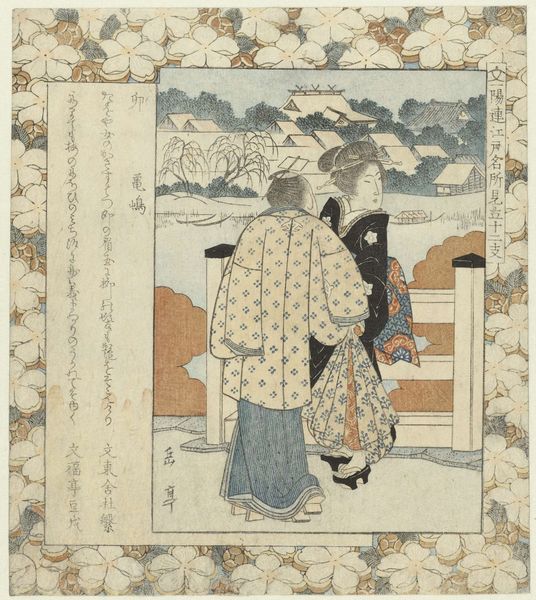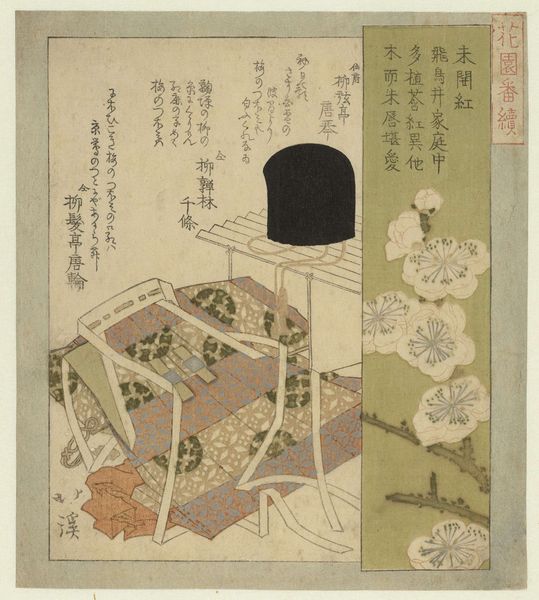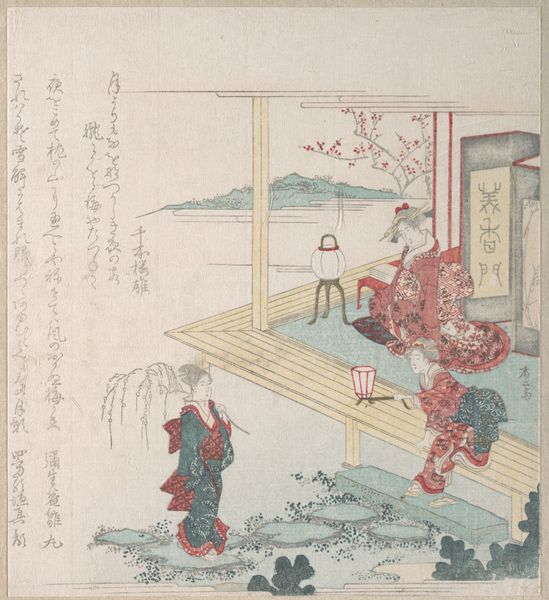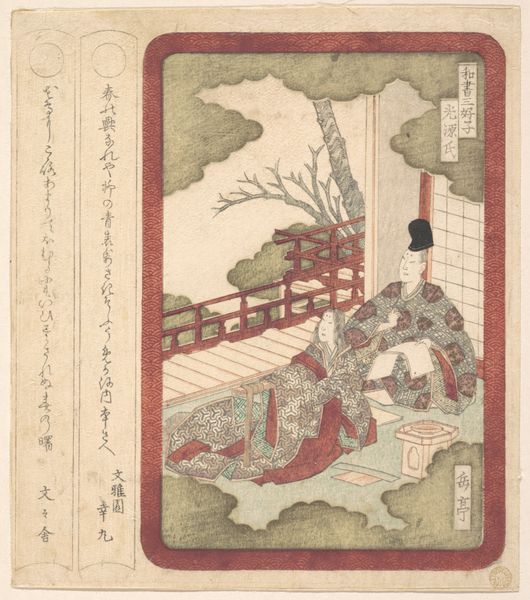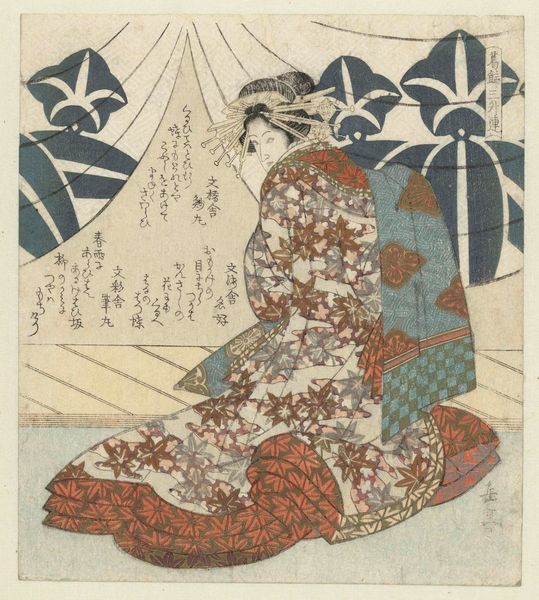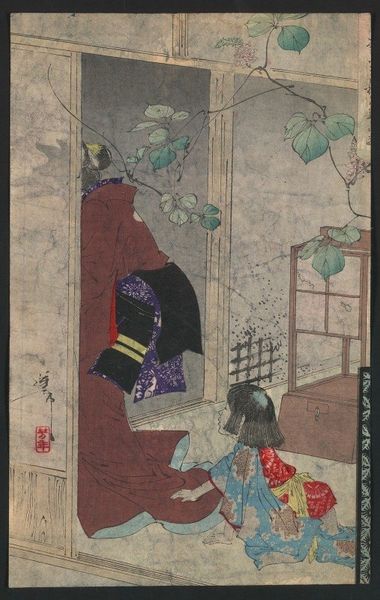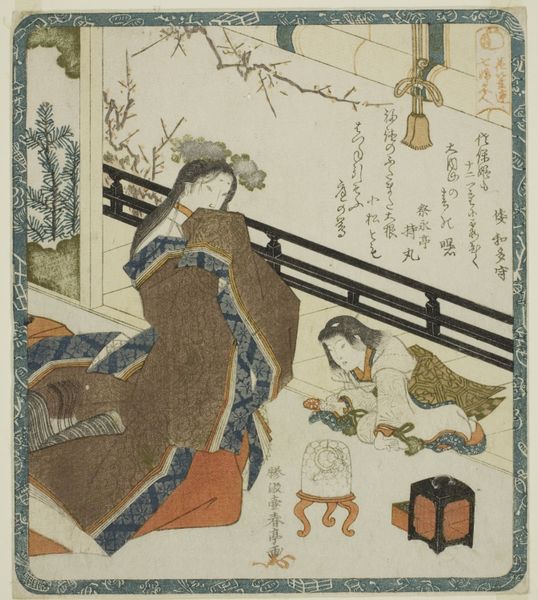
print, textile, woodblock-print
#
portrait
# print
#
asian-art
#
landscape
#
textile
#
ukiyo-e
#
woodblock-print
Dimensions: height 216 mm, width 186 mm
Copyright: Rijks Museum: Open Domain
Curator: Let's turn our attention to Yashima Gakutei's "De Hitomaro kersenbloesem," a woodblock print dating from around 1821-1822, currently residing at the Rijksmuseum. Editor: It gives me this oddly peaceful yet slightly melancholic vibe. Like looking through a doorway into a fading dream. Curator: That's an interesting read. Ukiyo-e prints like this often explore themes of beauty and transience, which can certainly evoke that feeling. Hitomaro himself was a renowned poet, a member of the Thirty-Six Immortal Poets of Japan. The image offers a fascinating confluence of portraiture, landscape, and text. Editor: I like how the red of the balcony railing pops, it's like a heartbeat in all the muted blues and greys. And what's with the stylized textile patterns? The artist seems to enjoy circles a lot. Are those the kersenbloesem – cherry blossoms? Curator: Precisely! Textile designs, as well as framing floral patterns, are central components here, situating this particular example of ukiyo-e printmaking within broader cultural discourses. You see him here framed in cherry blossoms, one would assume, making a profound observation, composing a great poem perhaps? It’s easy to see why they associate Hitomaro with such scenes. His poetry is about the transient beauty of the natural world after all. Editor: The calligraphy adds another layer too. It's gorgeous, but I have no idea what it says! Curator: Those inscriptions play a critical role in ukiyo-e, melding visual art with literary tradition. This is not just about aesthetics; it is the total effect, layering themes like mortality and memory onto an understanding of beauty. They enhance the evocative, narrative aspect, enriching our understanding of cultural aesthetics, too, you know. Editor: Right. Well, I certainly appreciate it now that you explained all of that. The layering adds to that feeling of a fleeting moment. A moment captured between beauty and the recognition of its impermanence. Curator: Exactly. Hopefully this short discussion encourages viewers to look beyond simple imagery and engage with the social, historical, and cultural threads woven into Gakutei’s work. Editor: I am grateful to understand how the piece uses composition to evoke deep, complex feelings within something as small as a print. I may even check out more poetry!
Comments
No comments
Be the first to comment and join the conversation on the ultimate creative platform.
